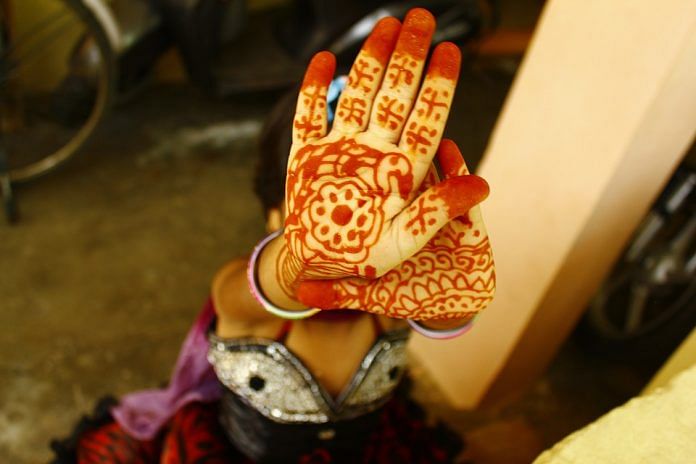
New Delhi: A case study attempting to explore the link between child marriages and natural disasters in India has concluded that such disasters, which lead to economic destruction, could increase the prevalence of child marriage.
The study was published in the Social Science Research Network on 21 December. It was conducted by Madhulika Khanna and Nishtha Kochhar, who are both PhD candidates in the Department of Economics at Georgetown University.
In order to establish a ‘causal’ relationship between natural disasters and child marriage, the researchers studied the 2008 Kosi floods in Bihar. These floods had resulted in a “massive economic shock” in the region and were unprecedented, since the region had not seen such a calamity since the 1950s.
According to the researchers, the floods, which submerged many parts of Northern Bihar severely affecting over 1,000 villages, caused damages estimated at Rs 593.5 crore.
Bihar, along with Jharkhand, Odisha and West Bengal, also accounts for 30 per cent of child marriages in the country.
The study
The researchers used the fourth round of the National Family Health Survey (NFHS) to isolate the ‘causal effect’ of the floods with the timing of early marriages.
They calculated “the impact of floods on the timing of marriage by comparing the difference in child marriage rates across flood-affected and non-flood affected districts for those who married between 2001 and July 2008 with the difference in rates… for those who married between September 2008 and 2015 (when those living in flood-affected districts had experienced the economic shock)”.
The estimation sample comprised 18,797 women and 3,033 men, all of whom married between 2001 and 2016, about seven years before and after the flooding event (the fourth round of the National Family Health Survey interviewed only 15 per cent of randomly chosen male spouses).
It was found that the districts that experienced greater destruction of property witnessed more child marriages. The study found that there was a 6.9 per cent increase in male child marriages and a 3.6 per cent increase in female child marriages.
If the sample size was restricted to 3,033 couples, then the increase in female child marriages increased by 7.1 per cent. Further, the result was ‘driven’ by marriages held within two-and-a-half years of the flood.
Boys married off for dowry
This link between floods and child marriages was explained by families choosing to marry off their young sons in order to receive dowry to get them through times.
The study also found that the effect of the Kosi floods was “more pronounced” in Hindu households where dowry is “predominant” and among landless families as well.
“These results suggest that child marriage could be a critical coping mechanism in response to economic losses associated with natural disasters,” the case study inferred.
It also highlighted the need to think about policy responses that would ‘decouple’ child marriages and natural disasters. “It is critical to recognise that if disaster insurance or low-cost credit is readily available, the affected households will have ways — other than the dowry tradition — to plan recoveries after experiencing an economic shock,” it said.
Subscribe to our channels on YouTube & Telegram
Why news media is in crisis & How you can fix it
India needs free, fair, non-hyphenated and questioning journalism even more as it faces multiple crises.
But the news media is in a crisis of its own. There have been brutal layoffs and pay-cuts. The best of journalism is shrinking, yielding to crude prime-time spectacle.
ThePrint has the finest young reporters, columnists and editors working for it. Sustaining journalism of this quality needs smart and thinking people like you to pay for it. Whether you live in India or overseas, you can do it here.